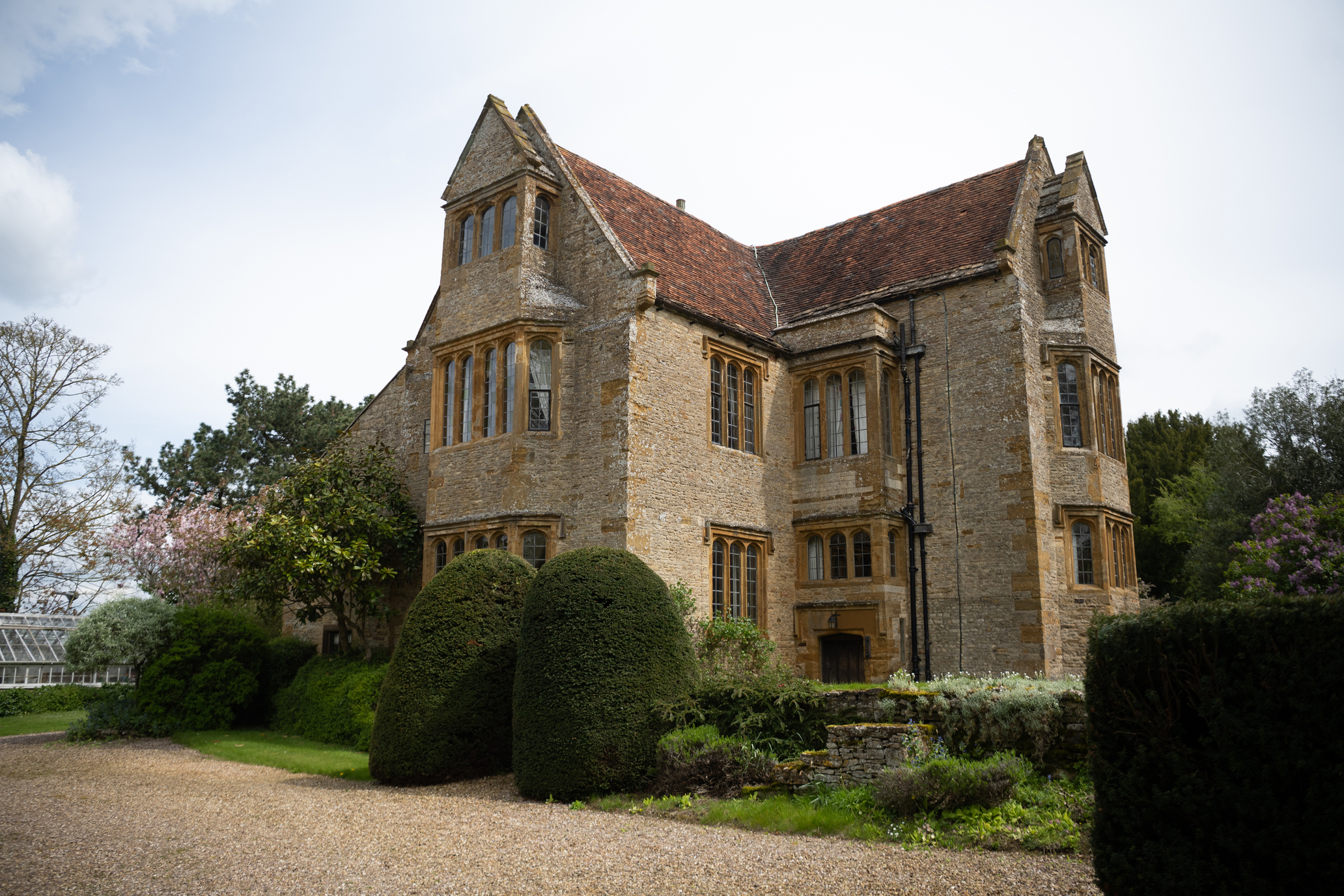

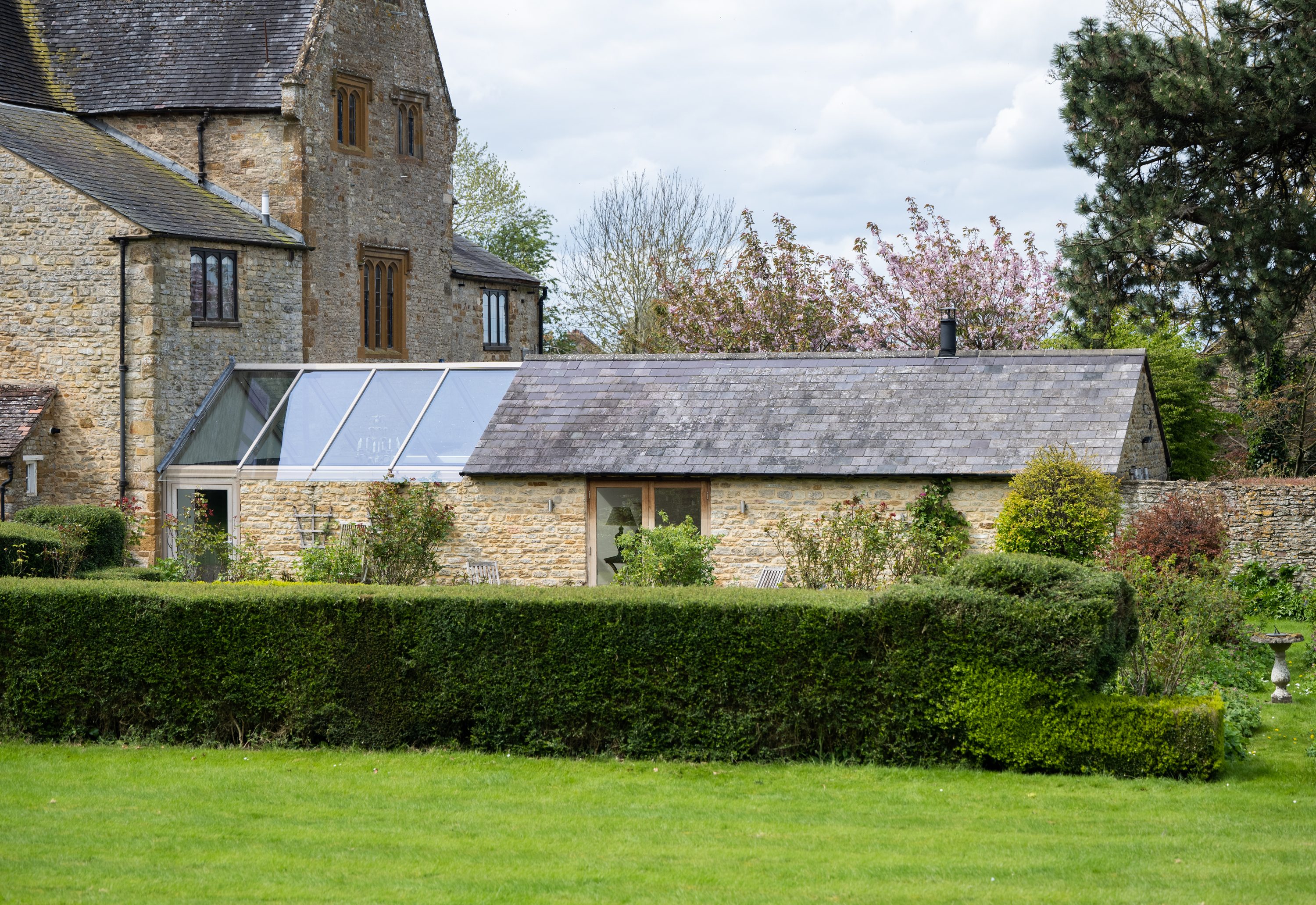


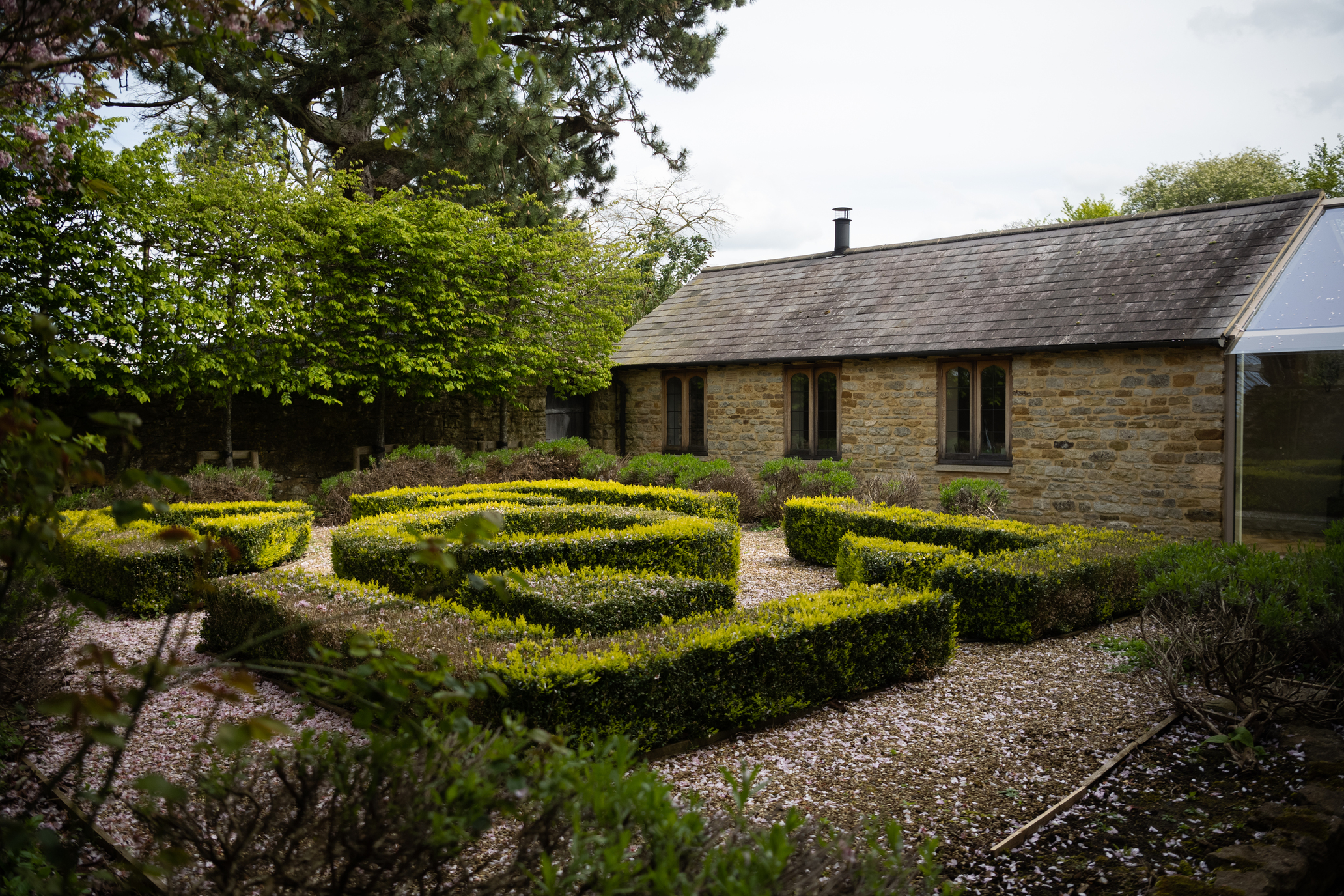
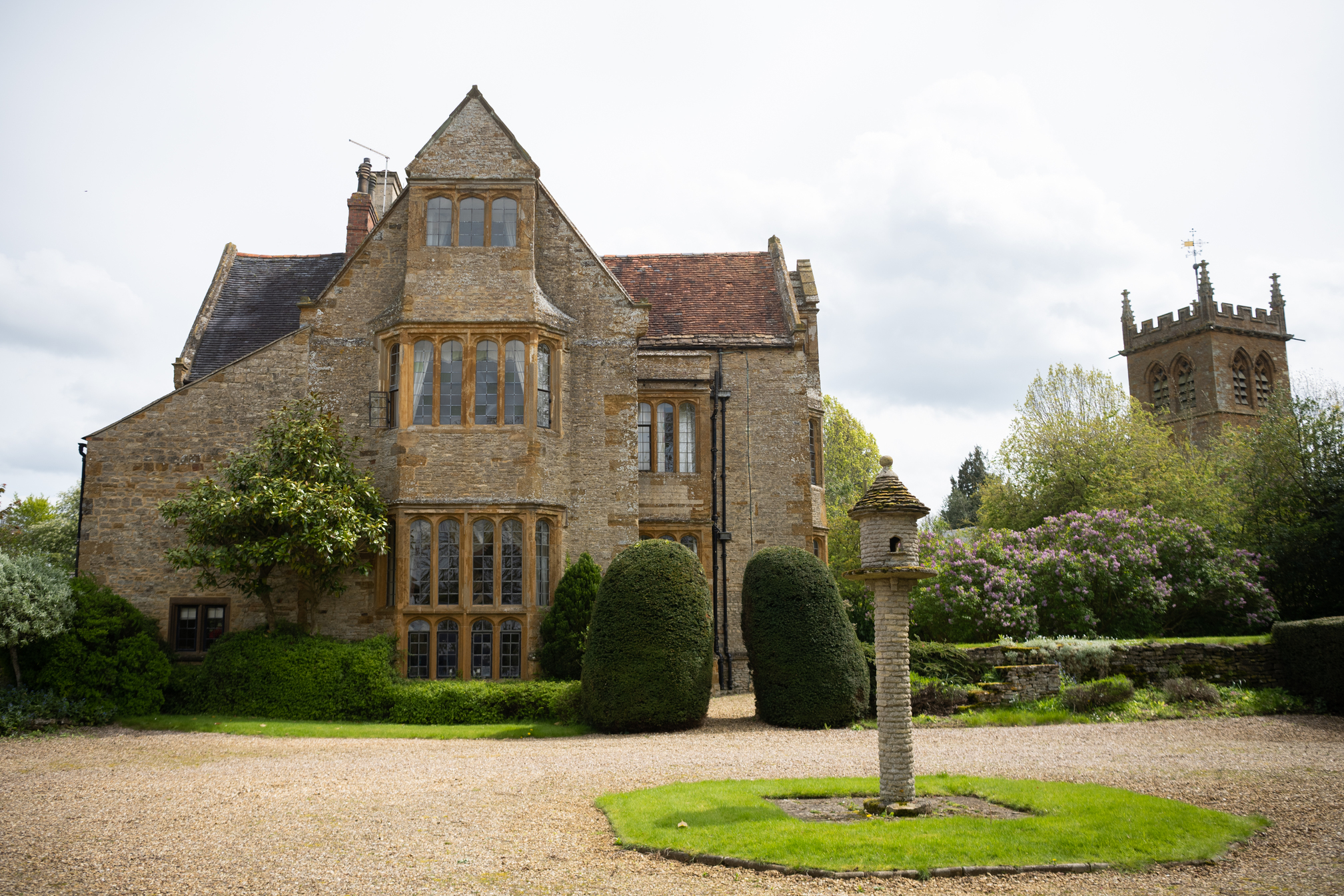

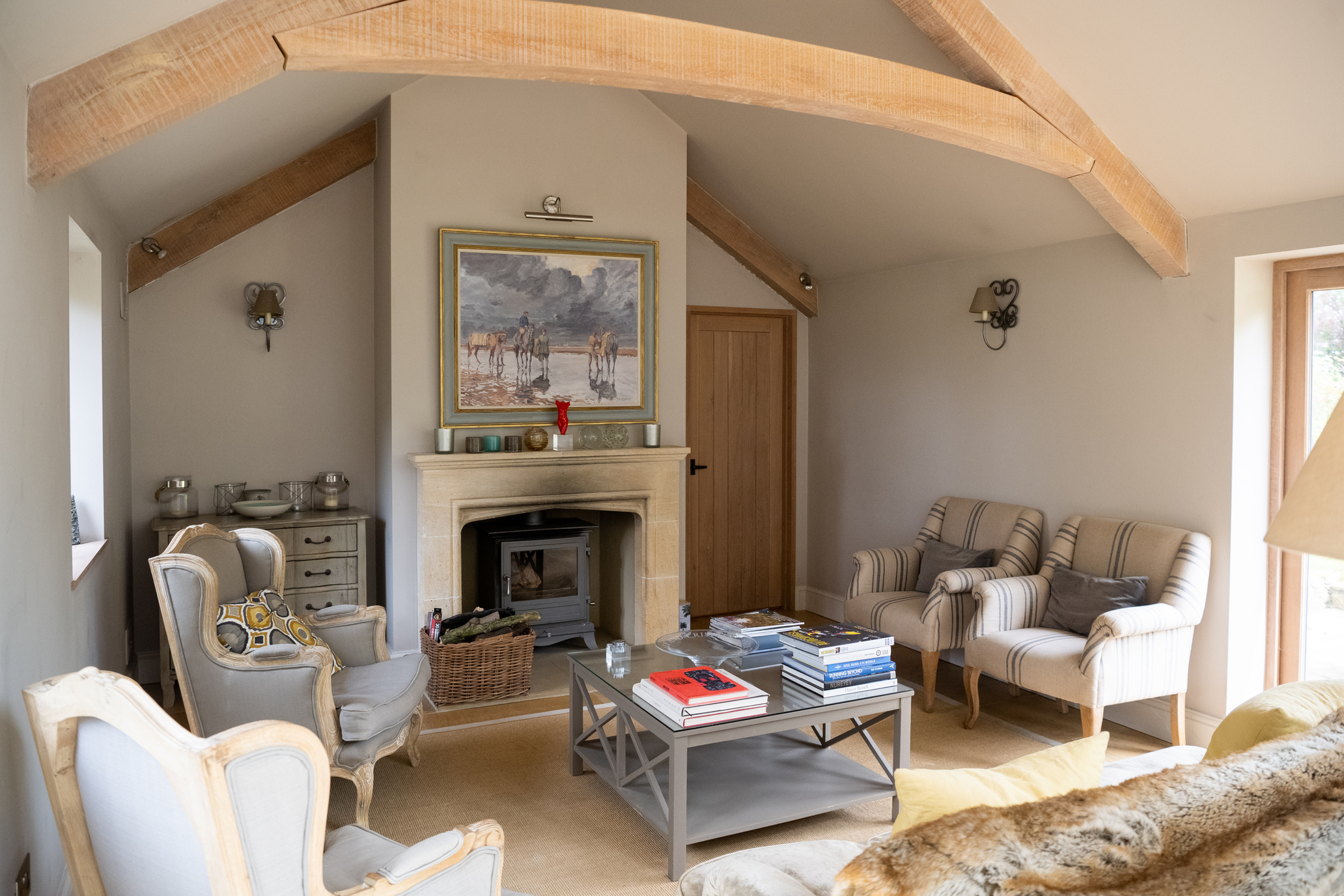

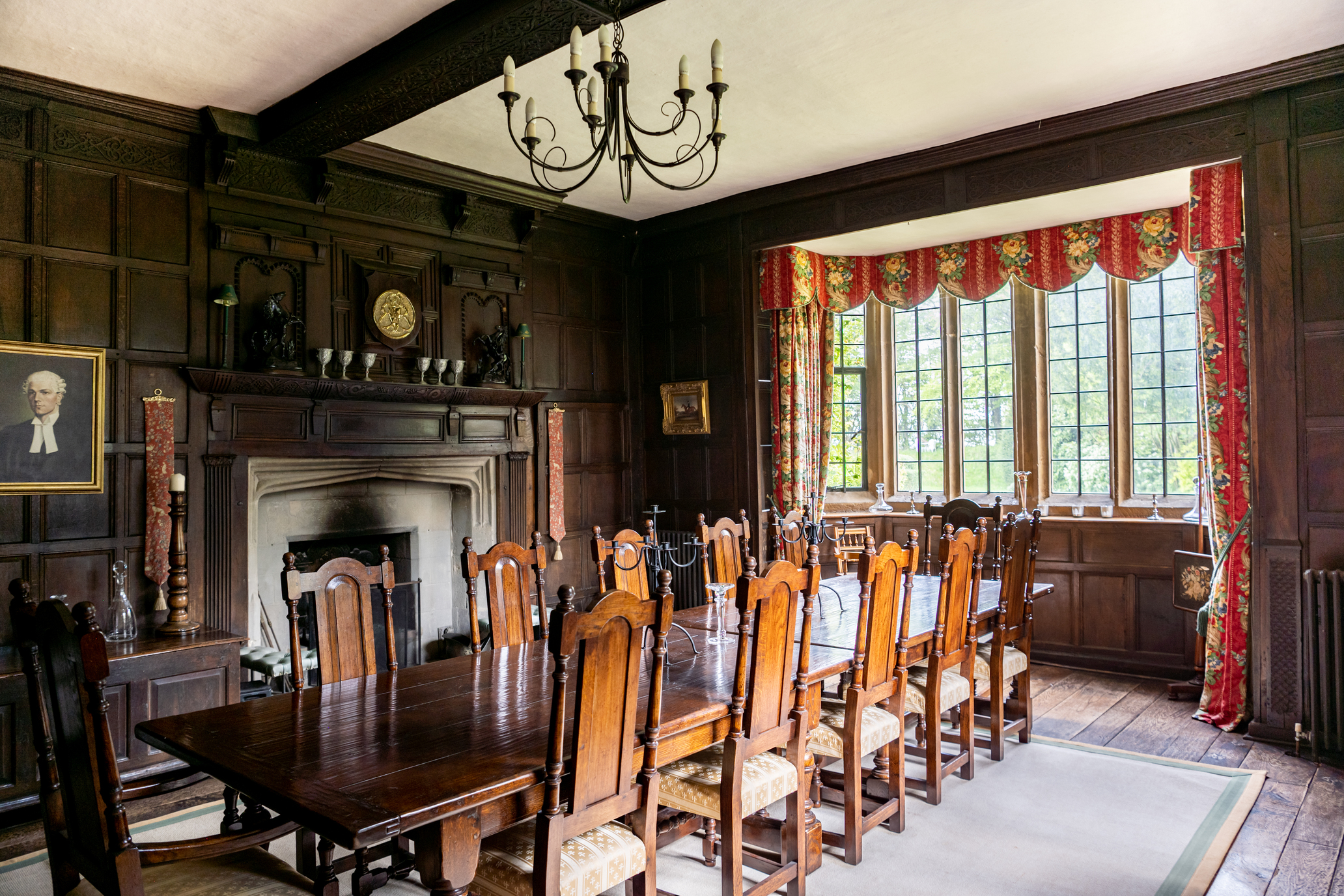


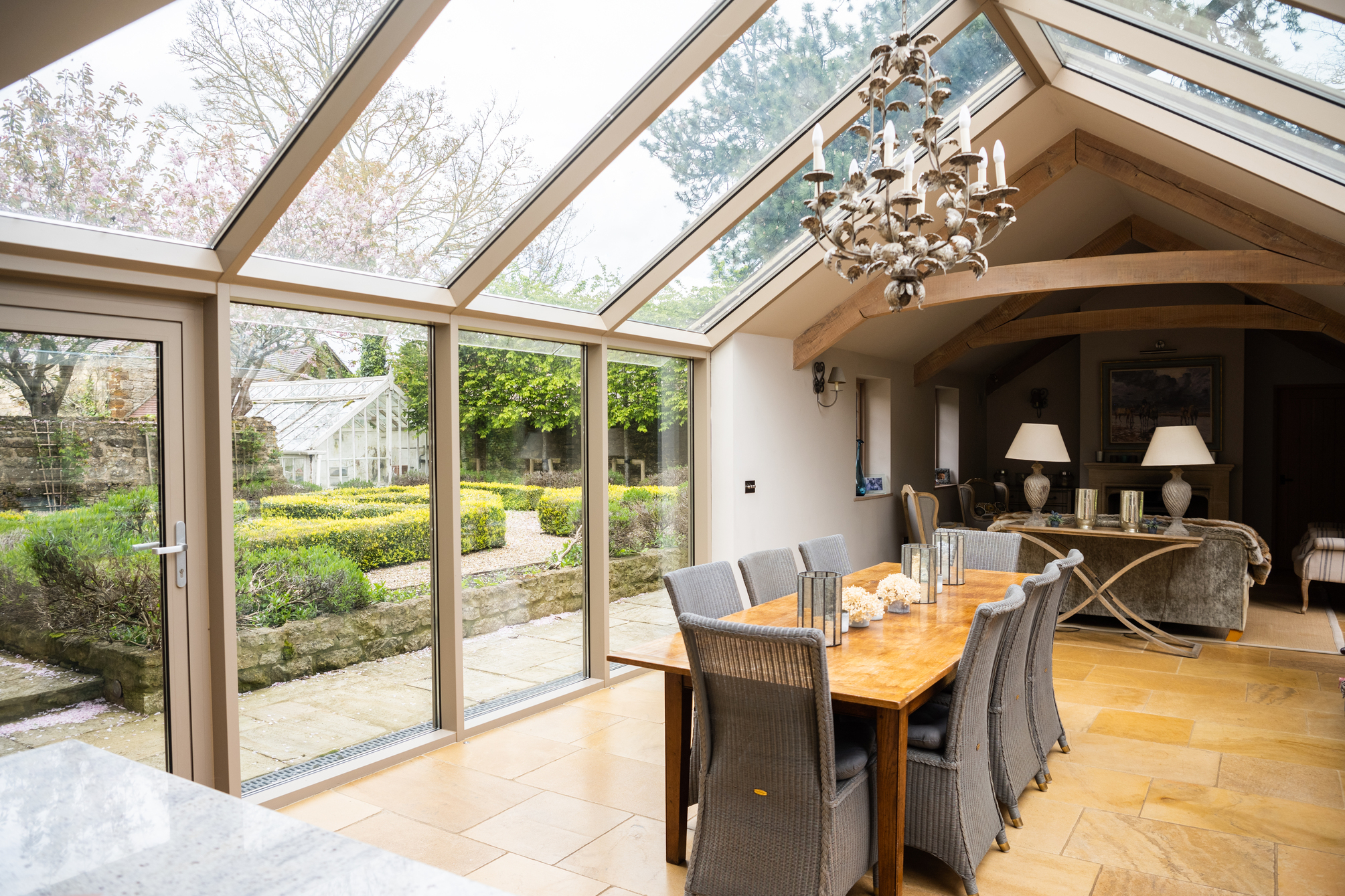
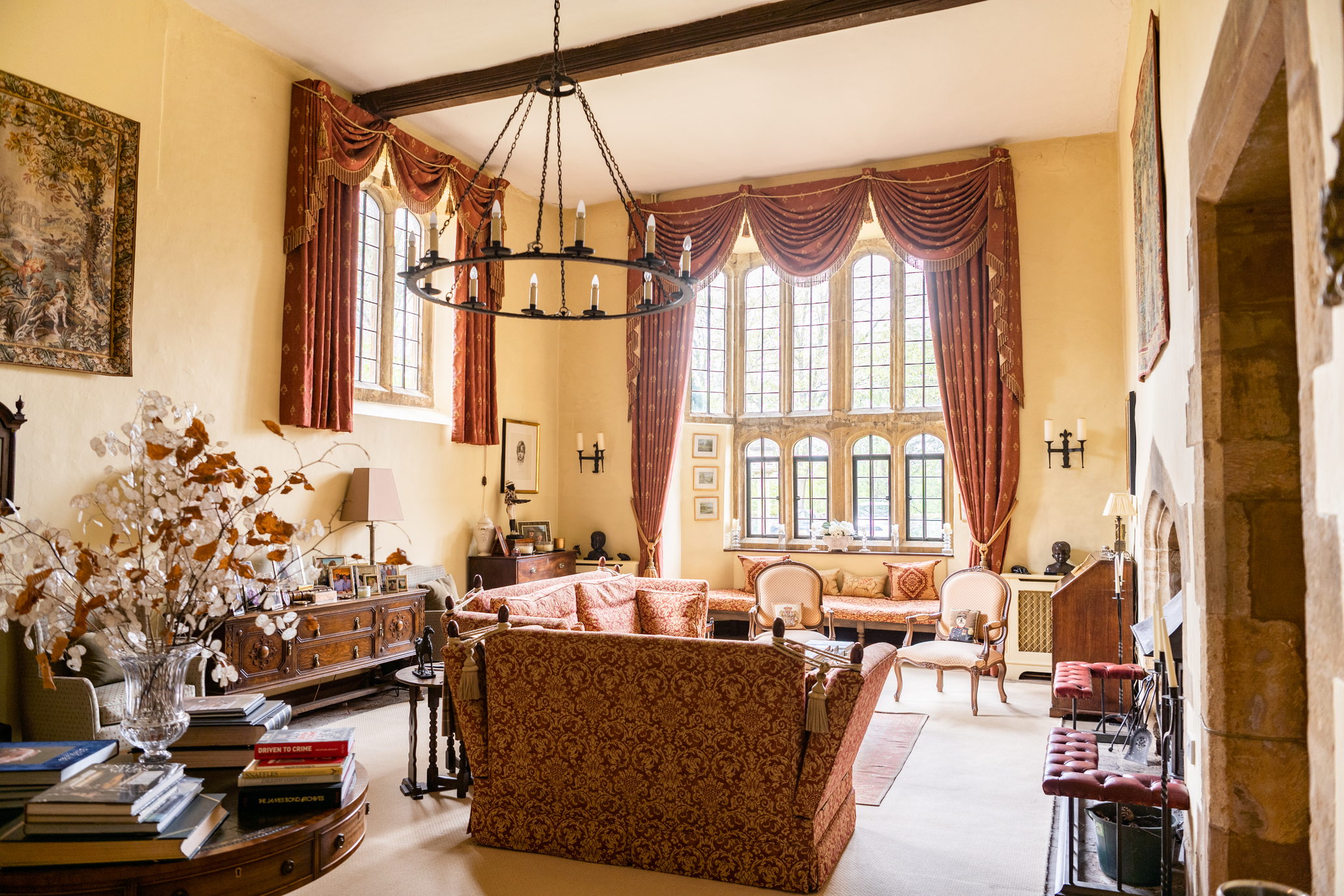
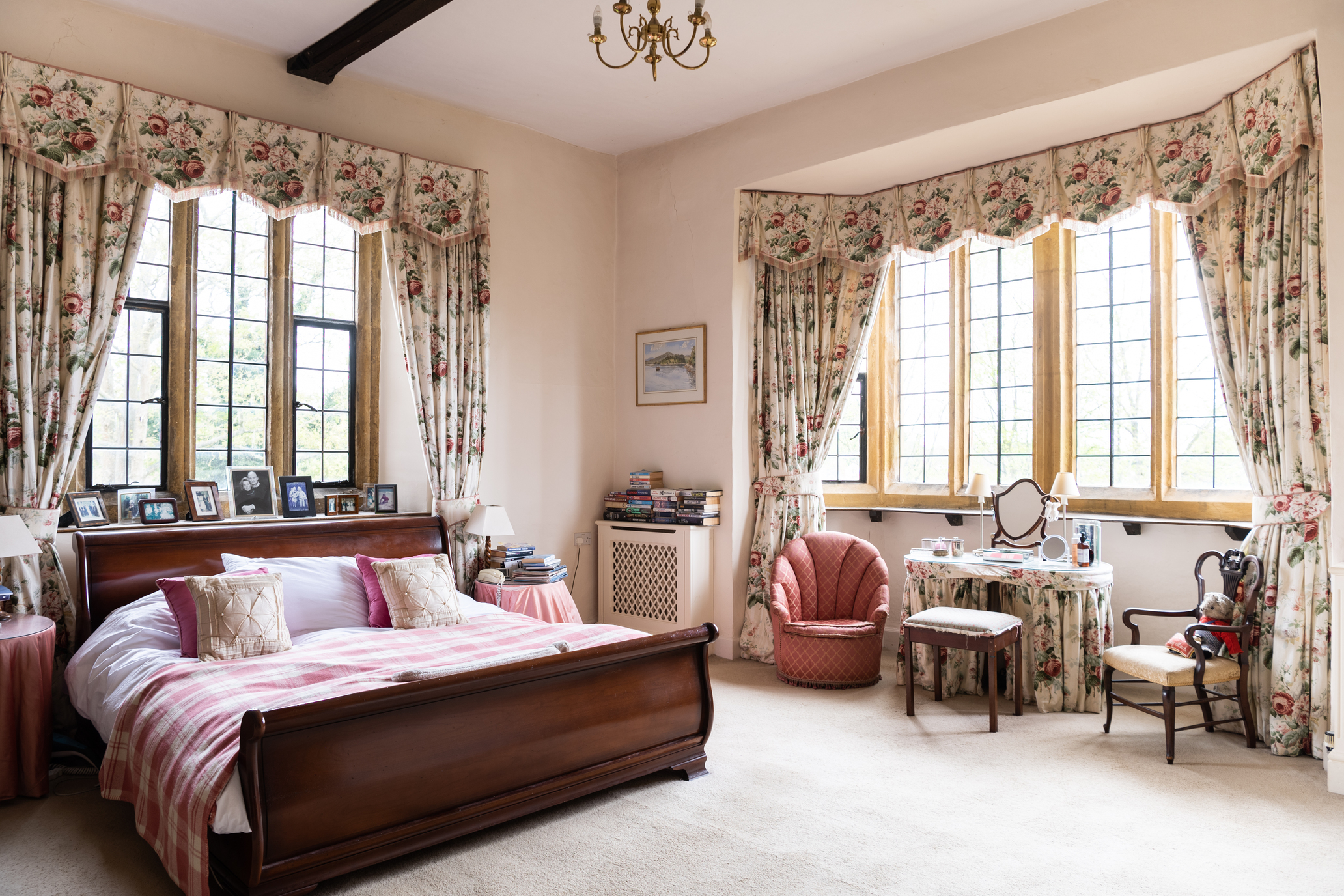

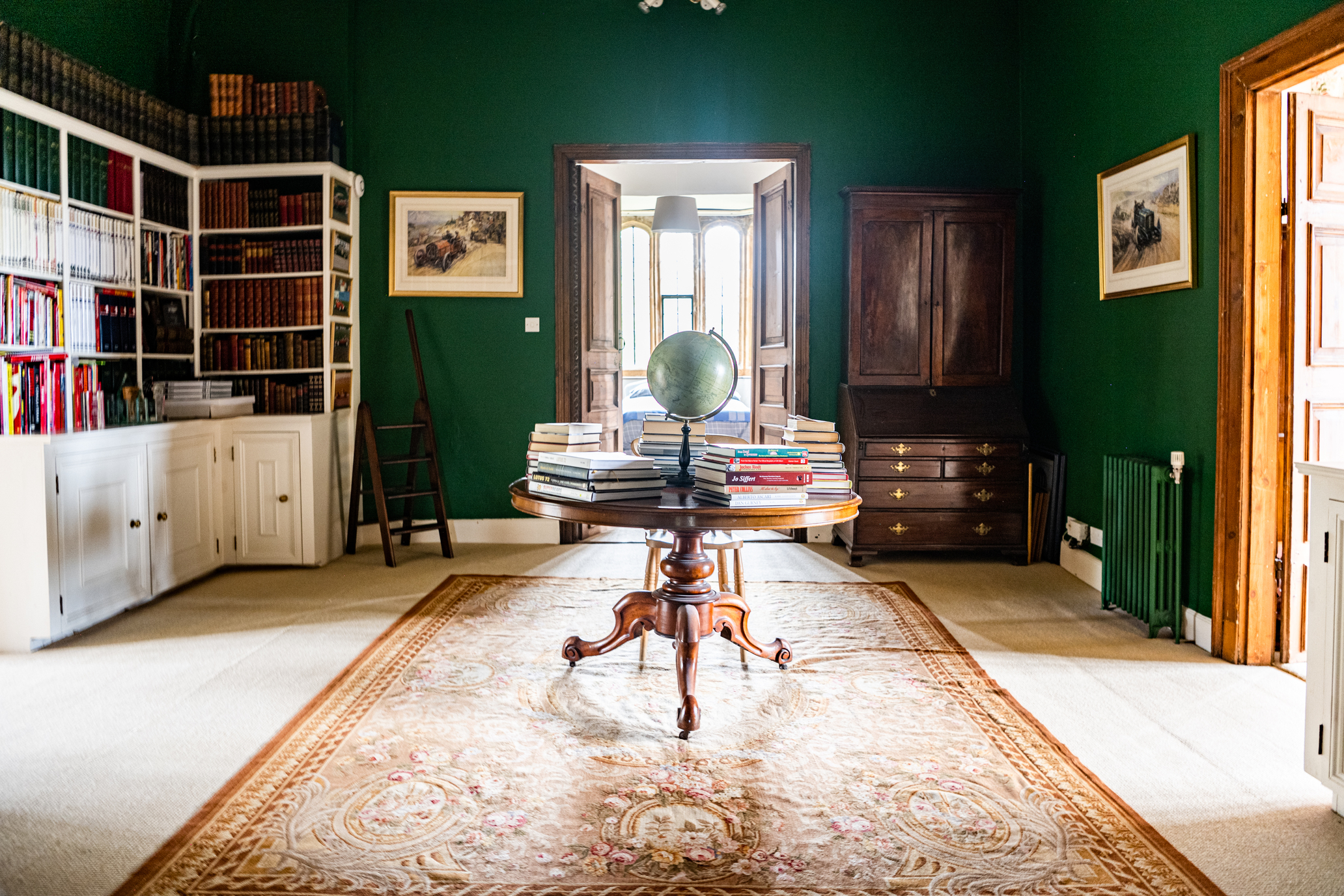




















Gayton Manor stands as both a uniquely fascinating piece of history and a beguilingly beautiful building.
For more information please email Lindsay@bluebookagency.com or call 07967555545
For full details please download our Brochure




Chapter One
Gayton Manor stands as both a uniquely fascinating piece of history and a beguilingly beautiful building.
Believed to have been originally designed as a hunting lodge, this Grade I listed house embodies the romance and grandeur of the Tudor age but on a hearteningly domestic and comfortable scale.
The house is set behind a stone wall at the quiet Northern edge of the pretty hilltop village of Gayton and it subsequently enjoys both privacy and panoramic views of the surrounding countryside and Norman church of St Mary across the lane.
A set of discreet electric iron gates open onto the driveway and a walled gravelled forecourt with clipped yew hedges surrounding a grass turning circle with a stone dovecote at its centre. The historic purpose of this area as a stable yard is clearly visible in the pretty stone stables and an ancient mounting block flanked by primrose and lavender. The house itself is constructed of coursed squared limestone with decorative honey coloured ironstone quoining and window dressings. It retains extensive characterful period features throughout, perhaps the most obviously striking of which are the soaringly high ceilings, (unexpected in houses of this period), and extensive cavetto mullion bay windows which flood the house with light from all angles. The cross-shape plan of the house has the benefit of making most rooms either dual or triple aspect.
Ground Floor
The front door is located on the East side of the house and opens into flagstoned hallway with a cloakroom tucked to one side and a door leading you into the most impressive room in the house which is the magnificent double height original Tudor great hall, now used as a formal drawing room. The room includes exposed beams and an enormous Tudor stone fireplace with multi fuel stove. The space is overlooked by a small minstrels’ gallery and there is lapsed planning permission to extend this gallery across the full width of the room to create a reading/study area. The panelled dining room is similarly striking and features another Tudor fireplace with ornate carved overmantel, beautiful oak floor, and floor to ceiling panelling embellished with decorative columns. A hidden door in the dining room panelling leads across the minstrels’ gallery to a separate triple aspect cosy sitting room with deep window seats. A modern playroom with oak floor and bespoke fitted cupboards and display shelves is accessed via a short flight of steps leading down from the great hall.
A set of double doors from the great hall leads through a passageway past a substantial utility room (previously the kitchen) to a fantastically spacious open plan family kitchen/breakfast/sitting room which is housed in a modern single-story extension with vaulted ceiling and local stone floor built by the current owners. This space was designed in consultation with English Heritage, and it strikes an excellent balance in fitting in well with the original 16th century building whilst also enhancing the flow of the house for modern living and entertaining. The large bespoke fitted kitchen includes handmade units with an island/breakfast bar, an electric Aga and a hidden walk-in pantry. The middle of the space is occupied by a dining area with long breakfast table under a glass link which joins the old house with the new extension. A sitting area with multi-fuel stove sits at the end of the room along with a separate secluded study and a cloakroom. The whole space has underfloor heating and is filled with light from the glass link as well as from French doors to a paved terrace in the garden, and windows overlooking a courtyard garden on the other side.
First Floor
The original wide Tudor dog leg staircase with an octagonal newel post and turned balustrades leads up to the first floor.
The cruciform plan of the house really comes into its own on this floor, which is made up of a generous square central bookshelf lined library hallway with bedrooms leading off it.
Existing Queen posts indicate that this floor was originally built as a single room providing a large dormitory for the Tanfield family who built the house. It now houses the principal bedroom suite with fireplace and ensuite bathroom with freestanding roll topped bath and a dressing area with fitted wardrobes. A guest bedroom suite on similar scale with fireplace, ensuite bathroom with bath and separate shower, and a dressing room is located through the door across the hall. The third door leading off from the library hallway houses another large double bedroom with triple aspect windows and unusual dual fireplaces, one of which is a dummy installed to maintain the symmetry of the room. There is also plumbing in place to add an en suite to this room if desired, subject to planning and listed building consent.
Second Floor
The lower landing on the second floor has a window to the rear, built-in cupboard storage, space for a seating area, and access to a family bathroom with bath. Steps up lead to a central vestibule seating area with access to the loft which has a window and potential for conversion into additional accommodation if desired and subject to planning and listed building consent.
Pretty arched doors from the vestibule lead to three further double bedrooms which all have vaulted ceilings. One of the bedrooms is accessed via a dressing room with a range of fitted wardrobes spanning one wall. This room has space for a bed and could be used as an additional bedroom if required.
Stable Flat and Outbuildings
On the other side of the drive from the house there is a stone built stable block which has three loose boxes and a tack room. A gate next to the stables gives access to an orchard which leads on to the paddocks. The stable block’s external staircase lead to a self-contained flat above the stables comprising of an open plan sitting/dining room, separate kitchen, bathroom and two double bedrooms. This space was converted with planning by the current owners and could be used as ancillary accommodation, further guest accommodation, or as a source of rental income.
The current owners were also granted planning permission in 2012 to double the size of the existing double garage which now easily accommodates four cars with space for storage or a workshop area. Over the garage there is an office which has a range of fitted cupboards and electric heating. The space could alternatively be used as a games room and has its own cloakroom.





Chapter Two
Approximately 4.42 acres of lovely gardens and grounds surround the house and include contrasting zones of formal garden, orchard, and grazing paddocks.
The front garden is hidden behind a stone wall and laid mainly to lawn with shrub borders and mature trees including vibrant lilac bushes and yew. The lawns spread out around the side of the house next to the modern kitchen extension which has glass doors leading onto a stone terrace perfect for entertaining in warmer months.
The terrace overlooks a Victorian sunken ornamental rose garden with lily pond surrounded by forget-me-nots, clipped box and yew hedges, and mixed flowerbeds. A large flat lawn, used by previous owners as an informal grass tennis court, sits beyond. This is bordered by a raised bank on one which still has the original stone steps in place which the 16th century Lord of the Manor used to access a private path on top of the bank which would at one time have continued beyond the garden to the church.
A courtyard garden is enclosed by a wall on one side and the modern extension on the other and has geometric box hedge beds between gravel paths and a greenhouse. A gate leads to a kitchen garden which has raised vegetable beds.





Chapter Three
An outstanding example of Tudor architecture which was obsessed with exuberant geometrical shapes, patterns and cryptic devices, Gayton’s history is no less extraordinary than the building itself.
The earliest recorded owners of Gayton are the Béthune family, who held the manor from the early 12th century. A notable member of that family was Sir Baldwin de Béthune, chivalric knight extraordinaire who was a close lifelong friend of the legendary William Marshal and a shining star of the royal court in his own right. Baldwin served several monarchs including Richard the Lionheart, who he accompanied on the third crusade as a close companion. He was among the select party who accompanied the king on his incognito journey back to England in 1192 when they were blown ashore into enemy territory, captured, and held for ransom by Leopold V, Duke of Austria, who Richard had inopportunely insulted several months before during the siege of Acre.
The manor later passed to the de Gayton family, including Sir Philip Gayton who is buried in St Mary’s church across the lane in a magnificent tomb following his death in 1316, and subsequently to the Tanfield family, who lived here from 1446 to 1607.
The current house is believed to date back to the 1540s and a possible clue to the identity of its builders can be found in the doorway leading from the grand staircase to the dining room which retains its original carved Tudor arched surround decorated with putti and the initials F&B. These likely refer to Francis Tanfield who died in 1558 and is buried with his wife Bridget in the church in Alabaster tomb depicting the couple along with their 18 children.
The rare and highly distinctive cruciform plan of the house is similar to that of nearby Lyveden New Beild, (built several decades later around 1605), but English Heritage note that the architecture at Gayton does not appear to have any religious significance. Sir Thomas Tresham, who built Lyvedon, designed every inch of his house to be imbued with Catholic symbolism and spent much of his life imprisoned by Elizabeth I for his faith, which was upheld by his staunchly recusant descendants who numbered amongst the gunpowder plotters. The Tanfield family in comparison were seemingly in favour at Elizabeth’s court and Francis Tanfield was one of the signatories of the Act of Uniformity in first year of the Queen’s reign, a hotly debated Act which restored the 1552 version of the English Prayer Book. Intriguingly, a hidden underground tunnel leads from Gayton Manor to Gayton church.






Any questions about our properties, your search or anything else, email The Blue Book or call us with any enquiry you may have and we’ll be sure to respond quickly
Be the first to hear about our properties for sale and insights on the market